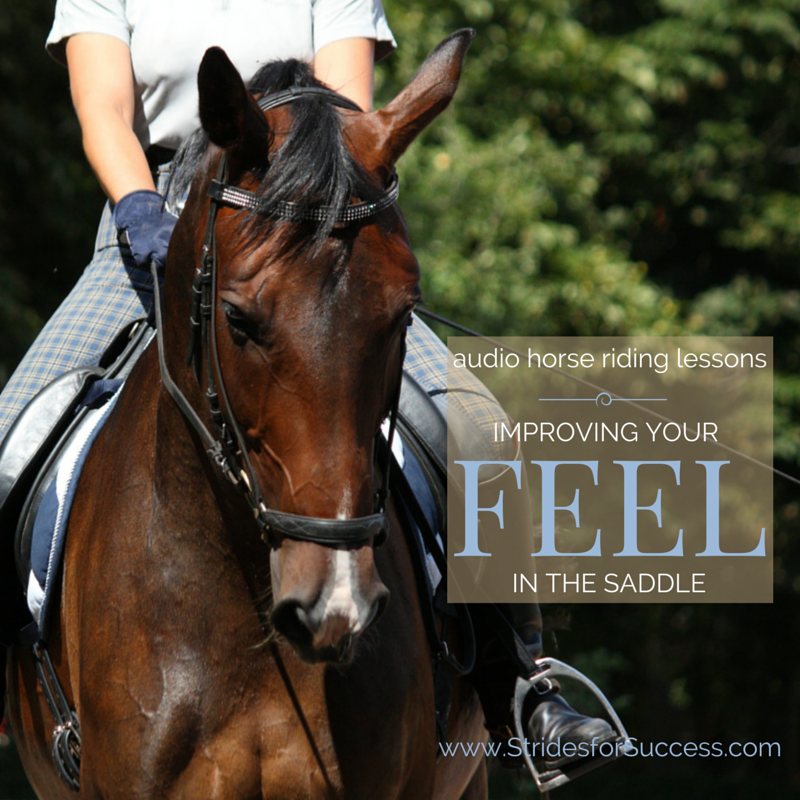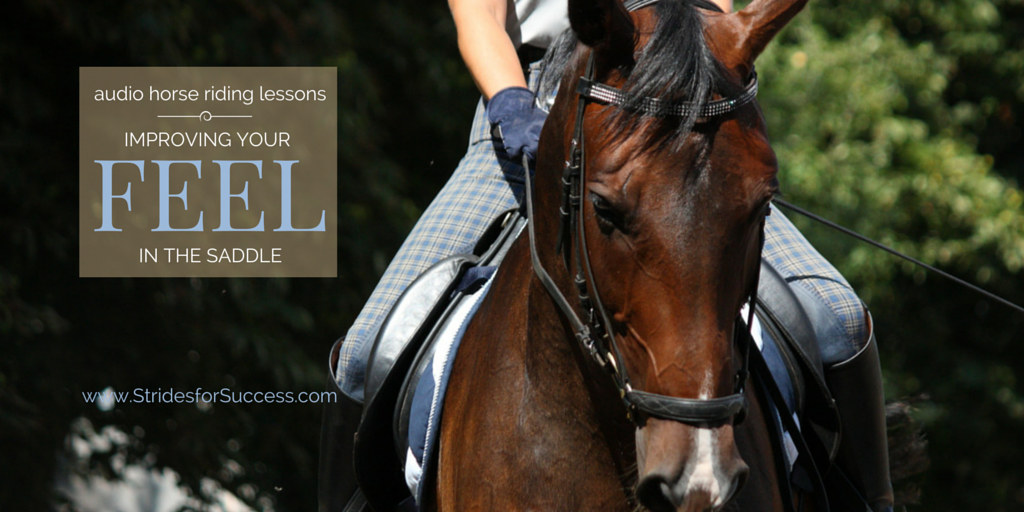
Feel… A hugely important component of successful horsemanship and something that is often considered as a talent that you are either gifted at birth with or your not!
From years spent helping and watching people ride, I do agree that some people seem to have a more natural feel than others. However, I have also found that, often, riders who seemingly lack natural feel can learn it. They can develop it with consistent effort and diligence.
What Is Feel?
So what is feel? My explanation of feel is the ability to know the right time to ask a question of your horse without having to consciously think about it. It is also the skill of reacting correctly, in a timely fashion, to almost all situations without, again, having to think too long or hard about it.
True feel is not a conscious thought, rather a subconscious response to the present situation to affect the outcome you want.
However, often the frustration felt while trying to find your ‘feel’, is the very thing that will prevent you from developing your riding skills and mastering your body. This prevents you from getting in tune with your horse and dancing the same dance.
Warm Up Before Riding
Firstly, before you hop into the saddle, invest some time warming up your body. This will ensure that you are just as ready to work as your horse is. I think as riders we can definitely improve our own personal performance in the saddle if we invest even a quarter amount of the time and dedication we spend on warming up our horses, warming up our own bodies!
Some initial simple stretches & exercises can be a huge game-changer when you do then mount up.
Correct Your Position & Posture
When in the saddle, begin by engaging your core. Then make sure your shoulders, pelvis, and legs are aligned as they should be. More times than not, a locked pelvis or hip joint is what works against you developing your natural feel as a rider.
Pay attention that your legs are not too far back, leaving you sitting on your crotch. Also that you are not squeezing or pinching with your thighs or legs which stops you from releasing your knee. Allow your legs to hang. Then look at ‘wrapping’ them around your horse, keeping your knee off so your legs do not ‘stick out’.
Relaxation is, as always, of the utmost importance in order for you to be receptive to the horse & his movement. Excess tension in either you or the horse will stop most of the feel between horse & rider. And stop you from absorbing the movement as it happens.
It is also important to remember that your horse must be allowed to move forward. When he does you,as the rider, should follow your horse. Make adjustments based on what you are feeling, when, and with each body part. Only when you, the rider, can truly feel the horse underneath you can you then actively begin to make adjustments based on what is happening, or what you desire to happen.

Increase Your Awareness
You need to become aware of your horse and be sensitive to their every movement. I suggest taking things back to walk. Then, with your feet out of your stirrups, allowing your legs to drape over your horse’s sides. From here, begin counting each footfall in each stride your horse takes.
Begin to notice which hoof is the 1, which is the 2, the 3 and the 4 of each stride.
Once you can accurately tell which hoof is moving when in the sequence, begin paying attention to your body. Notice how your horse’s moving is affecting & influencing your movement. If you are in a safe, enclosed space with a horse you trust, you can even close your eyes. This will help you to block out other distractions and really allow you to feel what is going on underneath you. So, as your horse is walking, first begin to feel the rhythm of the walk, the 1, 2, 3, 4…
Notice The Hind Legs Moving
Once this is established, begin focusing on which of the beats is your horse’s inside back leg moving forward (before) he puts his hoof on the ground. Your left hip (on that same side) will dip down as his leg lifts off the ground to move forward underneath you both.
This is because his barrel will swing out to the opposite side to make room for the leg coming under him. Often this is an easy way to remember this…
Concentrate and focus on the movement, rhythm, and beat. If necessary, have a person on the ground first tell you when this is happening. Then notice and remember how your body reacts to this movement. If you are not fortunate enough to have a reliable person on the ground and you are still struggling to feel, it often helps if you place your hands on your upper thighs and feel which thigh goes up and down, and when.
Only through correct repetition of this exercise in a calm, relaxed manner will you begin to enhance your powers to feel what is happening and from there, begin to move with your horse as a real team.
Happy Riding
Lorna
This topic is just one that we regularly cover inside of Connection. If you are interested in finding out more about Connection, have a look HERE >>
Additional Resources for Equestrians
-
-
-
-
-
- Online Community for Equestrian focusing on Planning and Mindset
- Great Expectations – Returning to Riding series
- Step by Step – Returning to Riding Series
- Choosing Your Mindset – Returning to Riding Series
- Focusing on the Basics – Returning to Riding Series
- The Original Returning to Riding Plan
- The Full Returning to Riding Program
- Free Equestrian Fitness Challenge
- Connection; The Online Membership for Equestrians
-
-
-
-

2 Comments